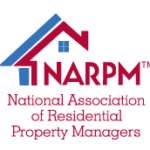Rental Property Vacancy Rates. What is a Vacancy Rate & what Vacancy Rate is recommended
Rental property vacancy rates:
We know that your rental property is going to be vacant percentage of the time, so most real estate investors will engage a vacancy rate. If your rent is $1000 a month, they would deduct that vacancy rate from that $1000 a month that you're collecting when the property is occupied to accommodate for those periods of time when it's vacant.
When a tenant moves out, you commonly have to get into the property, you commonly have to inspect it, you commonly have to make some kind of improvements to the property. You have to do some touch up painting, you have to clean it, so on and so forth. It takes time to market the property and it also takes time to place a tenant. Investors often will employ a percentage. A common percentage is 4%. Another common percentage would be 5%. So if the rent was $1000 a month, 4% of that would come off the top, every month you would deduct that, at least mentally, and that would adjust for if and when you're finally vacant again and you're having to go through that three week period of time of vacancy, hopefully it's not much more than that.
5% is also another common number I hear a lot. I commonly use 4%, but I own a property management company. So we are very good at filling vacancies. We're just a marketing machine, so I felt very comfortable when my wife and my rentals, that my company will be able to secure a tenant fairly quickly. If I were a landlord, I would probably might come in around if I only own maybe two to maybe five properties, I would probably be coming in around 5.2 or 5.7% vacancy rates, and also take into account times of the year.
April is going to be an incredibly easy time for of the year for you to rent. Whereas in as soon as we get closer and closer to Thanksgiving and through New Year’s, it's going to be a much more difficult time for you to find a tenant. You can also find yourself vacant at these times because tenants will often move on to home ownership. And that's really tough for a tenant to wind up home ownership with the end of a lease. If a tenant breaks lease and commonly believe it or not, they are allowed to break lease; if they break the lease and you find yourself vacant at a tough time of the year, your vacancy rate is going to go up.
How we adjust for that is when we get an incoming tenant, we all give them a lease that's over a year. And we've never gotten pushback from a tenant ever on this. We'll commonly give them a 15 month lease. Tenants will reach out and say why is the lease you've gave me is 15 months? And we'll respond simply, it's better for the owner and they'll just respond. So the important thing though is, if your lease does escalate every year, and I recommend putting an escalation charge, we use a number that we've found that we don't get pushbacks from incoming tenants of 3.9%. The rent will go up 3.9% automatically, and make sure it still goes up after that 12 months. So if you're giving a tenant a 15 month lease, 12 months through, make sure the rent is being increased at 3.9%, so you're getting that rent increase and then get yourself vacant at a most ideal time. Vacancy rate - make sure you're actually bringing this into your figures. Good luck!!!






